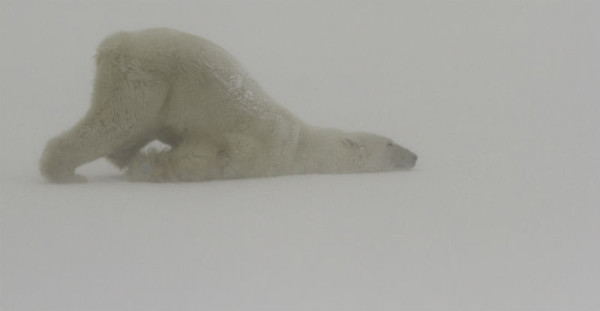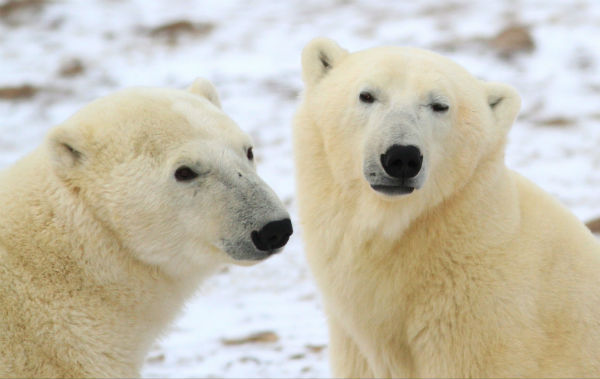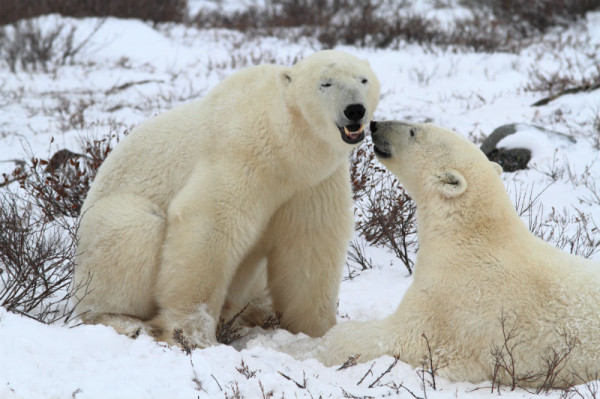Fat and Fur: Polar Bear Insulation
Do you have polar bear questions? Because we have answers for Polar Bear Week (February 24-28)! Send your questions to live@wwfcanada.org today, and be sure to tune in for our live Twitter Q&A on Friday, February 28 at 1 p.m. EST to get your answers!
It’s no exaggeration to say that polar bears are built to survive – and enjoy – the cold. From their heavily furred paws to their thick layer of body fat, they’re the kind of animals that actually become more active as the temperature drops.

While temperatures below zero with snow and wind may sound brutally cold to some in the south, terms like blizzard and polar vortex come to mind, for polar bears it’s just everyday weather. I’ve watched bears stretching and rolling in the snow in weather that you and I would need layers and a heavy parka to “enjoy”.
Almost every aspect of the polar bears design is engineered for warmth. Their bodies are designed to be lined with a cozy layer of fat, which can be up to 3.4 inches thick. This fat not only helps polar bears keep warm, but acts as an energy store for slow hunting periods.

Although polar bears appear white, their fur is actually transparent, and just appears white because of the way it scatters light. This coat, of course, is also designed to keep the bears comfortable well below zero. While their thick undercoat prevents heat loss, their top coat – or guard hairs – consists of hollow hairs that are longer and lightly, to help repel water, since bears are marine mammals.
Along with their physical attributes and physiology, their lifestyle and food preference is also designed to keep bears warm: so is their lifestyle. For the most part, bears wander, walking fairly slowly for extended periods. This helps keep them warm, but also minimizes the amount of energy their using to travel, rather than swimming or running. Their primary prey, ringed seals, is also very high in fat, which polar bears efficiently burn or metabolize to stay warm.

For polar bears, staying cool is a much greater challenge than staying warm, especially as Arctic summers get longer. They have been seen digging into mud and kelp beds to try and cool down, and often spend a lot more time resting. They are built for life on the cool sea ice, and the loss of that ice due to climate change is the greatest threat to these bears.
That’s why WWF is working to ensure that polar bears and other ice-dependent species have a home in the future, one that fits their design: the Last Ice Area, a patch of resilient sea ice high in the Arctic. To help support our work, please give today and Coca-Cola® will match your donation dollar-for-dollar until March 15, 2014, to a maximum of $1 million USD (Canada and U.S. only).
